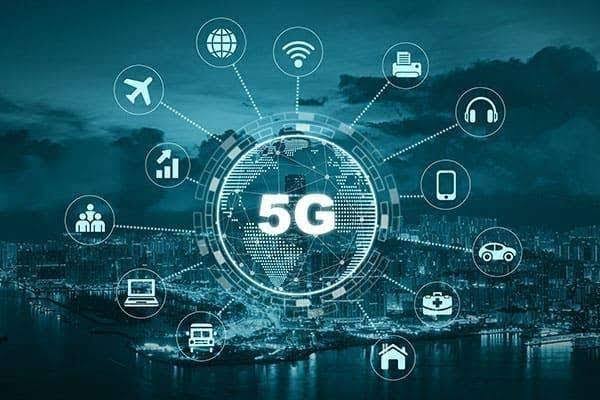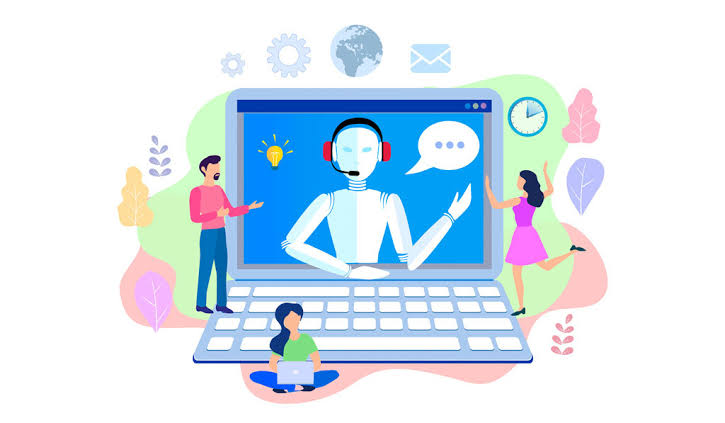The introduction of 5G networks is changing the landscape of technology globally, and one of the areas most affected is the Internet of Things (IoT). IoT depends heavily on fast, reliable, and secure connectivity to function effectively, and 5G has been designed to provide exactly that. With faster data transfer speeds, ultra-low latency, and the ability to connect a massive number of devices simultaneously, 5G is laying the foundation for the next level of IoT growth and innovation.
Faster Data Transfer Speeds
One of the main benefits of 5G in IoT development is its speed. Unlike previous generations of mobile networks, 5G can process data at speeds up to 100 times faster than 4G. This means devices can exchange information in real time without delays.
For IoT applications such as autonomous vehicles, healthcare monitoring systems, and industrial automation, this speed is critical. For example, connected cars need instant communication between vehicles and traffic systems to prevent accidents. Similarly, real-time patient monitoring requires fast transmission of health data to doctors and hospitals.
Ultra-Low Latency for Real-Time Communication
Latency refers to the delay between sending and receiving data. With 5G, latency can be reduced to as little as one millisecond, compared to about 50 milliseconds in 4G. This low latency is vital for IoT applications where immediate response is necessary.
In smart manufacturing, machines can coordinate with each other instantly to adjust production without human intervention. In smart cities, traffic lights can react to real-time traffic flow, reducing congestion and improving safety. Such advancements are only possible because of the near-instantaneous communication enabled by 5G.
Supporting a Massive Number of Devices
Another major impact of 5G on IoT development is its ability to support billions of devices at once. Current 4G networks struggle when too many devices connect at the same time, leading to slow speeds and dropped connections. 5G, however, is designed to handle a much higher density of connected devices.
This opens doors for large-scale IoT applications like smart cities, where millions of sensors, cameras, and devices need to work together seamlessly. From smart energy grids to connected public transportation, 5G provides the backbone that ensures all devices can communicate without interference.
Boosting Smart Home and Consumer IoT Devices
For everyday users, 5G will enhance the performance of smart home devices. Gadgets like smart speakers, security cameras, connected appliances, and wearable health trackers will work faster and more reliably. For example, video feeds from home security cameras will stream in ultra-high definition without lag, and voice assistants will respond instantly to commands.
This improvement in speed and connectivity will make consumer IoT more practical and efficient, encouraging wider adoption globally.
Enabling Advanced Healthcare Solutions
Healthcare is one of the sectors that will see the greatest transformation from 5G-powered IoT. Remote surgeries, real-time patient monitoring, and advanced telemedicine will become more feasible. Doctors will be able to monitor patients through wearable IoT devices that transmit data instantly to medical centers, enabling faster diagnosis and treatment.
In emergencies, ambulances equipped with 5G-connected IoT devices can transmit vital information to hospitals before arrival, saving crucial time and improving patient outcomes.
Revolutionizing Industrial IoT
Industrial IoT, also known as IIoT, is set to benefit greatly from 5G. Factories will become smarter with machines and robots communicating seamlessly. Predictive maintenance will become more effective as IoT sensors collect and analyze data in real time, preventing costly breakdowns.
Additionally, logistics and supply chains will improve as IoT devices track goods in real time, providing accurate updates on location and condition. This level of efficiency and automation is expected to drive productivity across industries.
Advancing Autonomous Vehicles
Autonomous vehicles rely heavily on IoT and connectivity to operate safely. With 5G, cars can communicate instantly with other vehicles, road infrastructure, and cloud systems. This makes navigation, traffic management, and accident prevention far more reliable.
The low latency of 5G ensures that decisions are made within milliseconds, which is crucial for self-driving technology. As a result, 5G is accelerating the path toward safer and more widespread adoption of autonomous vehicles.
Challenges of 5G and IoT Integration
Despite the benefits, the integration of 5G with IoT faces challenges. Infrastructure development is still in progress, and building a global 5G network requires huge investments. Security is another concern, as more connected devices increase the risk of cyberattacks. Ensuring that data transmitted across IoT systems remains secure will be critical.
Additionally, compatibility with existing IoT devices may be an issue, requiring upgrades or replacements that could be costly for businesses and consumers.
The Future of IoT with 5G
Looking ahead, 5G will serve as the backbone of IoT development. From smart homes and healthcare to transportation and industry, the possibilities are vast. The technology will not only improve efficiency but also create new opportunities for innovation and services that were not possible before.
As infrastructure expands and more devices are designed to work with 5G, IoT will continue to evolve into a powerful global ecosystem that connects people, machines, and environments seamlessly.
Final Thoughts
The impact of 5G on IoT development cannot be overstated. By delivering faster speeds, ultra-low latency, and massive device connectivity, 5G is unlocking the full potential of IoT across industries and daily life. Although challenges remain, the benefits far outweigh the hurdles, and the future of IoT in a 5G-powered world looks more promising than ever.



